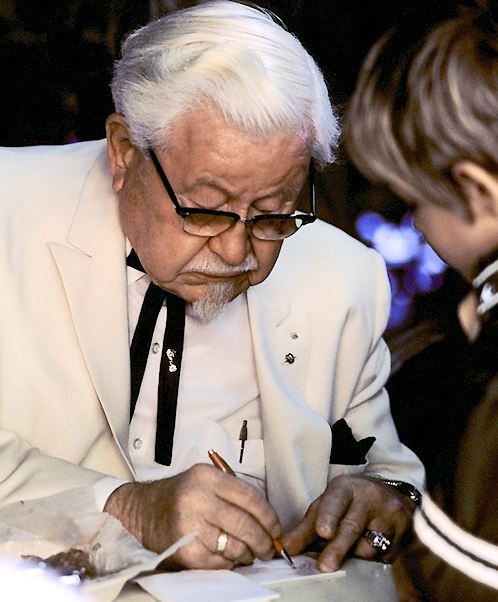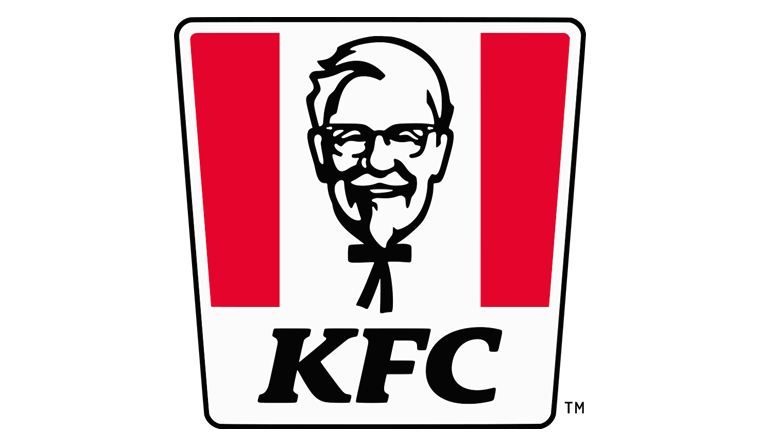The history of Kentucky Fried Chicken, better known nowadays as KFC, is a testament of founder Col. Harland Sanders’ success after past hardships and a series of jobs. What’s more remarkable about Col. Sanders’ story is that age doesn’t matter when it comes to achieving success. By the time Sanders was 74 years old, he had sold Kentucky Fried Chicken for $2 million, which was quite a whopping amount of money at the time.
So how did KFC rise from a humble backroom store of a gas station to become one of the world’s biggest fast-food chains? We briefly explore the success story of Kentucky Fried Chicken and its founder, Col. Harland Sanders.

Harland David Sanders was born on September 9, 1890, in Henryville, Indiana. He was the oldest of three children to Wilbur and Margaret Ann Sanders. His father died when he was five years old, forcing his mother to work at a canning plant. As the eldest child, Sanders was left to take care of his two younger siblings.
His mother remarried, but Sanders had a tumultuous relationship with his stepfather. When he was twelve (or thirteen), he left home to work at a farmland. He lived with his uncle, who later got him a job as a conductor.
From then on, Sanders hopped from one job to another – painter, railroad fireman, plowman, ferryboat operator, justice of the peace, service-station operator, and insurance salesman – with mixed success.
The start of the fried chicken empire
When he was seven years old, Sanders’ mother taught him how to cook. She passed some of her recipes to him, including pan-fried chicken, steaks, country ham, and homemade biscuits. Little did he know that his knack and passion for cooking would lead him to something big.
In 1929 or 1930, he opened his first gas station on Route 25 just outside of North Corbin, Kentucky. Here he cooked for his family and for travelers who stopped by at his shop. Sanders became so successful that in 1937 he expanded his restaurant into 142 seats. He was also awarded the title “Kentucky Colonel” by the state’s governor.
Around this time, Sanders wanted to speed up the cooking process for his chicken. It was in the right smack of time when the first commercial pressure cookers were introduced. Sanders modified the pressure cooker into a pressure fryer, which enabled him to cook his chicken a lot faster while retaining the quality and taste of pan-fried chicken.
In 1940, Sanders perfected his “Original Recipe” of 11 herbs and spices. While he didn’t reveal the exact recipe, Sanders admitted that the ingredients included salt and pepper and anything else that “stand on everybody’s shelf.”
But with World War II and gas rationing occurring at the time, Sanders was forced to close shop as tourist activity dwindled. Also, the planned construction of Interstate 75 in 1955 that bypassed Corbin forced him to sell his properties. Sanders set out to travel across the U.S. to franchise his chicken recipe to restaurant owners. His first franchisee was his friend Pete friend Harman, who owned a hamburger restaurant in Salt Lake City, Utah.
Sanders had begun to get into the character of “The Colonel” – sporting a goatee and wearing a white coat with a string tie.
Over the next few years, Sanders successfully franchised other restaurants, which would add “Kentucky Fried Chicken” to their menus and use his name and image for promotional purposes.
Harman named his restaurant “Kentucky Fried Chicken” to stand out from his competitors. He also trademarked the phrase “it’s finger-lickin’ good,” which eventually became the company’s iconic slogan.
By 1963, Sanders had retired, and this time, his recipe was franchised to over 600 restaurants in the U.S. and Canada. He had used his social security income and life savings to travel across the U.S. to promote his fried chicken. In 1964, when he was 74, he sold his business to a group of investors led by John Y. Brown and Jack Massey for $2 million (which would be nearly $17 million in 2020 when adjusted for inflation).
By the time Sanders passed away in 1980, there were about 6,000 KFC outlets in the US and 47 countries around the world.
Why did Kentucky Fried Chicken rebrand itself as “KFC”?
In 1991, Kentucky Fried Chicken officially rebranded itself as KFC. There were several theories for the name change.
One theory claims that there were some issues with the name, including the word “chicken.” At the time, rumors (which were, of course, untrue) spread that KFC was using “mutant” chickens – that is, chemically engineered birds.
Another theory for the name change was that the company wanted to remove any reference to the term “fried” to prevent their health-conscious customers from being put off.
But the real reason was actually more mundane – the company just wanted to shorten the name. Besides, saying “KFC” is faster and a lot easier. Still, that hasn’t quashed these rumors and other urban legends surrounding it.
Today, KFC has 23,000 outlets in more than 140 countries around the world, according to its official website. As of 2013, it has $23 billion in annual revenue. It is now part of the Yum! Brands (formerly Tricon Global Restaurants), a restaurant company that also owns Taco Bell, Pizza Hut, and Wing Street chains.


